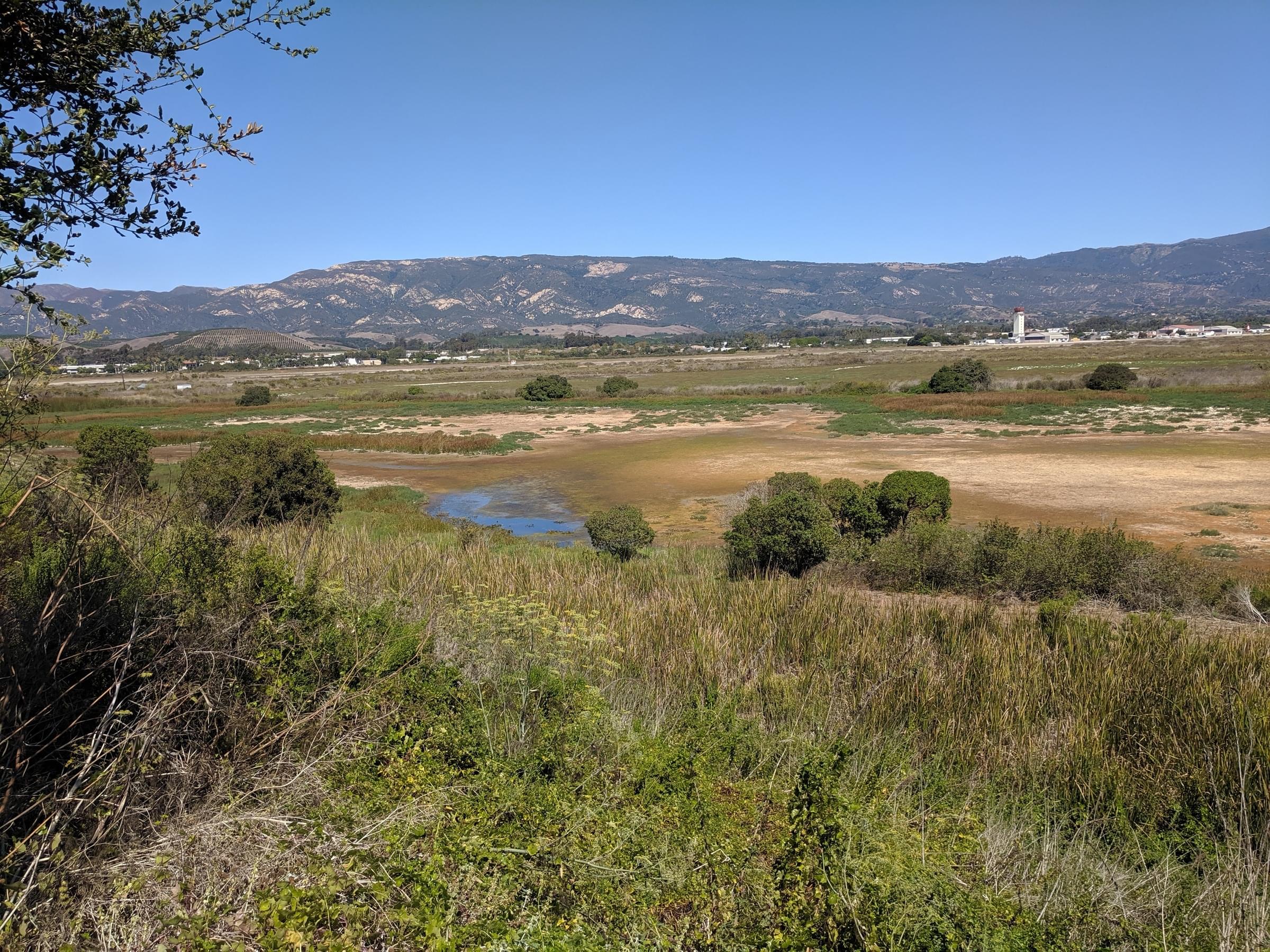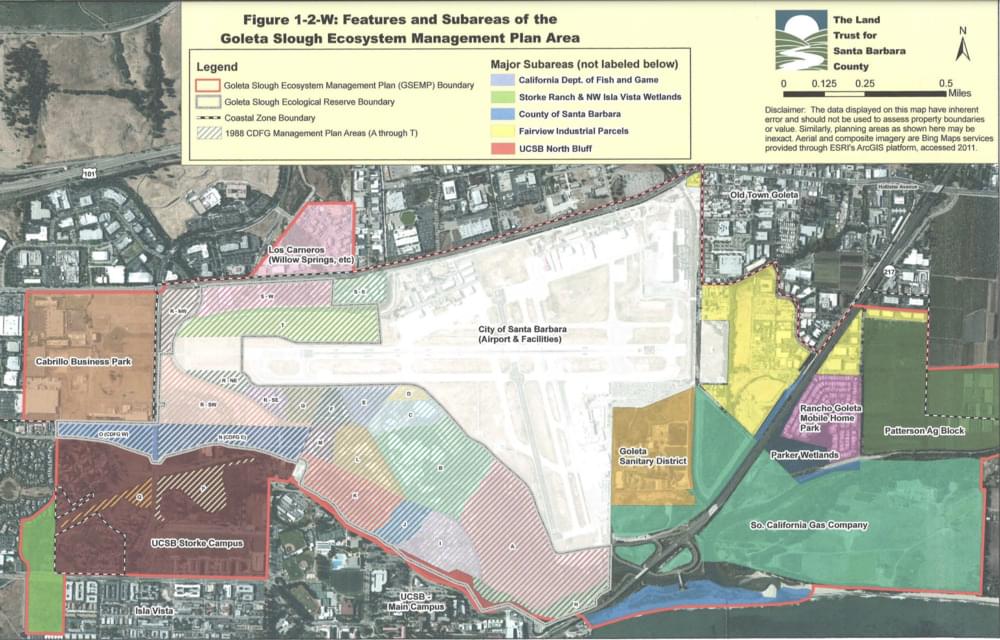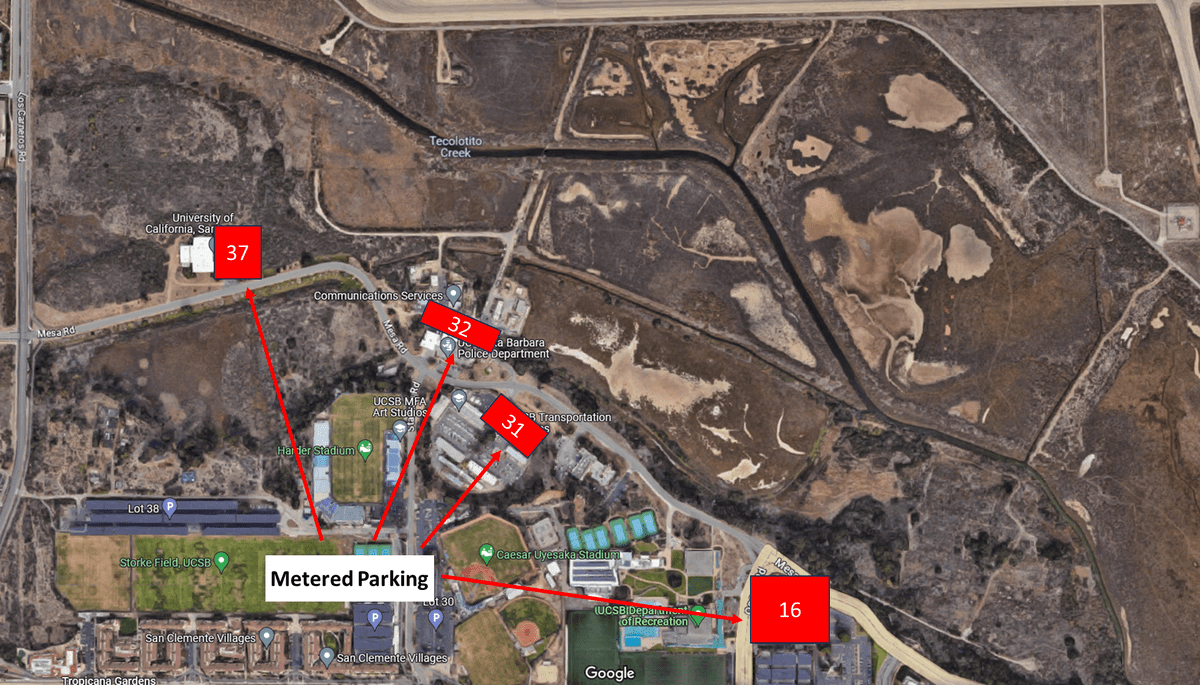Goleta Slough Ecological Reserve--Area K

Goleta Slough Ecological Reserve--Area K
Goleta, California
Goleta HistoryWikipedia
Goleta Slough Management Committee
Tips for Birding
Area K is a wetland in Goleta Slough that typically fills up with water during winter rains and then stays wet until late spring or summer. Birding takes place from next to Mesa Road around (34.4209, -119.8507), where there is a stretch without tress blocking the view. Different parts of the wetland are visible from different parts of that stretch, so try out a couple of different vantage points. The most obvious birds can be ID'd with binoculars, but a spotting scope is highly recommended. There is a pullout on Mesa Road, but parking there is technically not allowed. There is a parking lot by the nearby tennis courts.
Birds of Interest
In winter, there are often several hundred ducks of a rich variety, including Blue-winged Teal. As the area dries out, mudbanks are revealed, providing habitat for shorebirds; this is one of the better sites in Santa Barbara County for species like Lesser Yellowlegs. Other birds that have been recorded here include Common Gallinule, Pacific Golden-Plover, Ruff, Stilt Sandpiper, Solitary Sandpiper, Least Bittern, Eastern Kingbird, and Bank Swallow.
About Goleta Slough Ecological Reserve
See all hotspots at Goleta Slough Ecological Reserve
What is today Goleta Slough was once a large bay surrounded by a dense population of Chumash Native Americans. The water reached past today's Hollister Avenue and when the water level was high, the bay connected with Devereux Slough, making what is now the UCSB Campus an island. In 1862, torrential rains eroded the hillsides and vast amounts of silt were deposited into the bay, turning it into the shallow marsh it is today. In 1928, part of the slough was filled in to create an airstrip, which was expanded into a full-size airport starting in 1941. During World Was II and for some time after, this served as a military air base. Other parts of the slough were also filled in to create space for development such as the Goleta Sanitary District wastewater plant.
Today, only about one-third of the original wetland area remains. In 1986, Goleta Slough was declared an Ecological Reserve, managed by the California Department of Fish and Wildlife. In 2007, the adjoining Goleta Slough Marine Conservation Area was added; this includes the area below the mean high tide in the slough and Atascadero Creek.
The slough empties into the ocean at Goleta Beach County Park. A sandbar sometimes blocks the flow of water, but this is either flushed out naturally during heavy rains or breached mechanically so as to avoid water levels rising too high in the slough.
The vegetation in the slough is dominated by pickleweed, but also includes alkali-heath, salt grass, salt bush, ditch-grass, pondweed, tule, and cattails, as well as shrubs like willows and coyote brush and trees like Coast Live Oak.
Features
Restrooms on site
Wheelchair accessible trail
Entrance fee
Roadside viewing
Content from Goleta History, Wikipedia, Goleta Slough Management Committee, Linus Blomqvist, and Linus Blomqvist
 Goleta Slough
Goleta SloughGoleta Slough Management Committee
